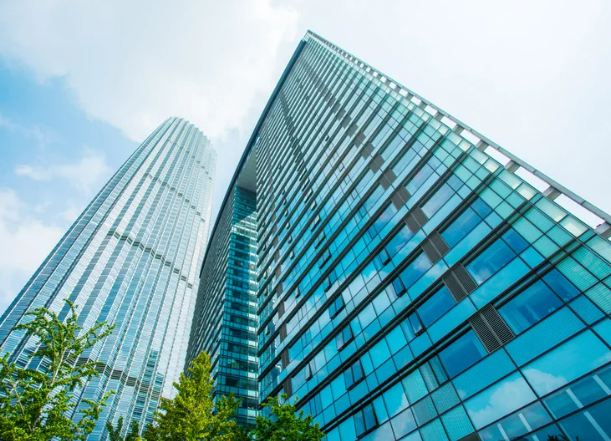Los Angeles Existing Buildings Energy and Water Efficiency Program
f.a.q.
LADBS EBEWE program
The City of Los Angeles Existing Buildings Energy and Water Efficiency Program (EBEWE) is a two-phase local ordinance. Phase I benchmarking requires commercial buildings with more than 20,000 SF and no residential utility accounts, and multifamily residential buildings with more than 20,000 SF and 17 or more utility accounts to submit whole-building energy and water benchmarking reports annually. Phase II Audit/Retro-Commissioning (A/RCx) requirements are due every five years and compliance is based on the benchmarking results and performance of the building.
The EBEWE program (Los Angeles’ Green New Deal Policy) in Los Angeles is a local law, Division 97 to the Los Angeles Municipal Code (LAMC) that is enforced by Los Angeles Department of Building and Safety (LADBS) that requires building owners to benchmark and disclose their building’s energy and water usage annually. The program aims to improve the energy and water efficiency of existing buildings in the city, reduce greenhouse gas emissions, and promote sustainable development. Some key drivers behind the program include:
- Environmental Sustainability
- Economic Benefits
- Energy Security
- Public Health and Comfort
The EBEWE program has several requirements that building owners must follow. The key requirements include:
- Benchmarking: Building owners are required to benchmark their building’s energy and water usage utilizing the ENERGY STAR Portfolio Manager. the benchmarking data must be submitted to the city annually via the LADBS EBEWE Portal Website.
- Disclosure: Building owners must disclose their building’s energy and water usage to the city, tenants, and potential buyers or lessees. The disclosure must include an energy and water efficiency score and a comparison to similar buildings in the area.
- Retro-Commissioning: Building owners of non-residential buildings with a gross floor area of 50,000 square feet or more must conduct retro-commissioning every five years.
- Energy Audit: Building owners of non-residential buildings with a gross floor area of 20,000 square feet or more must conduct an energy audit every five years.
- Water Efficiency: Building owners must ensure that their buildings meet the water efficiency standards established by the California Green Building Standards Code.
Phase I – Benchmarking $66.41 Annual Benchmarking Registration Fee
Phase II – Audit/Retro-Commissioning $199.22 5-Year A/RCx Registration Fee
12 Months of Energy, Water and Building Use Data
To complete the retro-commissioning requirement in compliance with the EBEWE program, building owners of non-residential buildings with a gross floor area of 50,000 SF or more must follow these steps:
- Identify and Select a Qualified Retro-Commissioning Provider: Building owners must select a qualified retro-commissioning provider who can conduct the retro-commissioning process.
- Develop a Retro-Commissioning Plan: The retro-commissioning provider and building owner must develop a retro-commissioning plan that outlines the scope of work, testing procedures, and timeline for completion.
- Conduct a Comprehensive Assessment: The retro-commissioning provider must conduct a comprehensive assessment of the building’s systems and equipment, including HVAC, lighting, controls, and other energy-consuming systems.
- Identify Operational and Maintenance Improvements: The retro-commissioning provider must identify operational and maintenance improvements that can improve energy efficiency, indoor air quality, and occupant comfort.
- Implement Improvements: the building owner must implement the recommended improvements identified by the retro-commissioning provider.
- Submit Retro-Commissioning Report: The retro-commissioning provider must submit a report to the building owner that documents the results of the retro-commissioning process, including the recommended improvements and their implementation.
- Submit Compliance Documentation: The building owner must submit compliance documentation to the city, including the retro-commissioning report, energy benchmarking data, and other required documentation.
SEC.91.9712 of the EBEWE ordinance puts the non-compliance fee for building owners at $202 per building. Additionally, if the invoice is not paid within 30 days, an additional 250% late fee will be imposed.
Building owners should also be aware that payment of the non-compliance fee does not result in compliance. The building will remain out of compliance with the EBEWE program and will be subject to further legal action. Additionally, the status of each building (Complied or Not Complied) is posted publicly and, in the future, may be recorded on the property as an open violation.
- The building is scheduled to be demolished within the calendar year.
- The building is and/or was unoccupied for the entire compliance year.
- the building did not receive energy or water service during the entire compliance year.
- The building use types are excluded in 91.9703. Scope.
LA EBEWE PHASE II A/RCX COMPLIANCE SCHEDULE
*Bold text (0-3) reflects the reissued due date from tolled deadlines.


LA EBEWE HIGHLIGHTS
Program Compliance Highlights for the Los Angeles Existing Buildings Energy and Water Efficiency Program.
Size of property
20,000 SF and Above
Property type
Commercial, Industrial, Multifamily Buildings
Due Date
Benchmarking: June 1st, Annually A/RCx Requirement: Every 5 Years
Enforcing agent
Los Angeles Department of Building and Safety (LADBS)
Contact Us
For more information or if you are interested in Okapi assisting on completing your building’s EBEWE Ordinance Compliance, please contact us today! Our team of experts is here to help. Reach out to us and let’s discuss how we can get your building(s) in compliance and leverage your data to increase energy efficiency in your portfolio.
